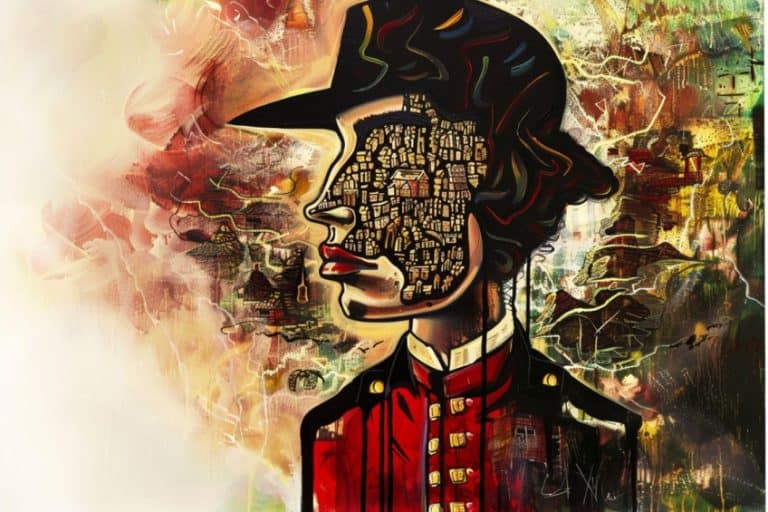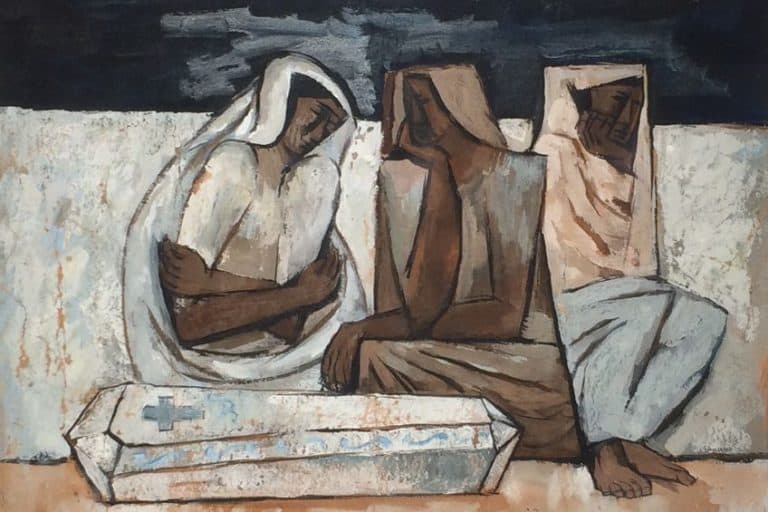Michael Heizer – A Look at Land Artist Michael Heizer’s Earthworks
Land artist Michael Heizer specializes in site-specific and large-scale earthen sculptures. This leading land artist explores the relationship between negative and positive space in his monumental excavations and sculptures. As one of the artists credited with founding the Land Art Movement, Heizer continues to challenge preconceived ideas about what constitutes art and artists’ relationships to the earth.
Michael Heizer Biography
Many believe that Heizer’s childhood destined him for this artistic path. Early in his life, Heizer experienced a wide range of influences that shaped his career. Since the 1960s, Heizer has been pushing the boundaries of the art world. With his land-based artworks, Heizer challenges artists and audiences to break the confines of art galleries and find beauty in the natural world.
Early Years and Influences
In 1944, Michael Heizer was born in California, in the city of Berkeley. His father, Robert Fleming Heizer, was one of the leading anthropologists of his time and specialized in Native American culture in Western America. Throughout his youth, Heizer’s father exposed him to the landscapes of Nevada, Bolivia, Peru, and California. Heizer’s grandfather, Olaf P. Jenkins, was a geologist, and one cannot ignore his influence on Heizer’s artistic development.
At the age of 12, Heizer took a year away from schooling as he accompanied his father to Mexico for an archeological dig. Heizer drew the sites while his father studied ancient monument rock sources. Site drawings continued to be an integral part of Heizer’s artistic process throughout his career.
New York: Michael Heizer Art Beginings
Beginning in 1963, Heizer spent a year at the San Fransisco Art Institute. Heizer then moved to New York in 1966, leaving the after a year. In New York, Heizer came into contact with several prominent artists, including Dan Flavin, Tony Smith, Carl Andre, Frank Stella, and Walter De Maria. Heizer supported himself in New York by painting apartments, and he began to work on his first abstract paintings and sculptures.
Heizer’s first paintings, which he called “negative paintings,” were on shaped canvases, blending his love of painting with his passion for form. Heizer used PVA latex to paint these geometric canvases, and these untraditionally shaped canvases highlight his early exploration of negative and positive forms. Fascinated with the melodies of space and matter, and absence and presence, Heizer would continue to explore these themes throughout his career.
In paintings like Track Painting (1967) and Trapezoid Painting (1966), Heizer leaves the interiors of his raw canvas white to emphasize negative space, but he paints the perimeters black to highlight the contrast. These early “displacement paintings” echo the geometries he can achieve in his later earthworks.
Going West: Michael Heizer Earthworks
It seems that Heizer found New York to be confining, as he longed to return to the planes and geographies of the West. Towards the end of 1967, he did just that. Heizer left the cramped city for the deserts of Nevada and California. It was here that he began to create his first negative sculptures. These sculptures used the earth as their canvas and medium. Heizer removed earth from the desert floor, creating negative subterranean forms.
During this part of his career, Heizer collaborated with several other early earth artists. He even featured in “Spiral Jetty”, a film by Robert Smithson and one of the most widely known examples of earth art.
With his colleague Walter de Maria, Heizer made a trip to the mountains of Sierra Nevada. Here, he began to create a new genre of earth art using the earth as the canvas and the medium. In the mountain woods of the Sierra Nevada, Heizer dug two great pits. One of the pits he lined with sheet metal and the other with plywood.
Heizer himself declared that this earthen installation was “ultra-modern art.” In these same forests, Heizer completed North, East, South, West (1967), an earthen installation consisting of several geometric holes in the Sierra Nevada.
Far away from the sky-high buildings and white walls of New York studios, Heizer began to carve out a new, unique artistic practice. During his time in the West, Heizer was able to reach new heights in the size and extent of his earthen installations. In 1968, he created a series of enormous “negative” sculptures called Nine Nevada Depressions. Heizer carved these depressions into various dry lakes throughout Nevada, including Massacre Dry Lake, Black Rock Desert, and Jean Dry Lake.
The following year, Heizer used concentrated aniline dyes and white lime powder to create a series called Primitive Dye Paintings (1969). These paintings covered large areas of the desert landscape and formed amorphous organic forms when viewed from above.
In the same year, Heizer embarked on one of his most well-known negative sculptures, Double Negative. This large project required the displacement of around 240,000 tonnes of rock from the Nevada desert to form 30-foot-wide and 50-foot-deep trenches, and it represented the culmination of this early period of his artistic career. The two mammoth trenches at Mormon Mesa spanned 1,500 feet.
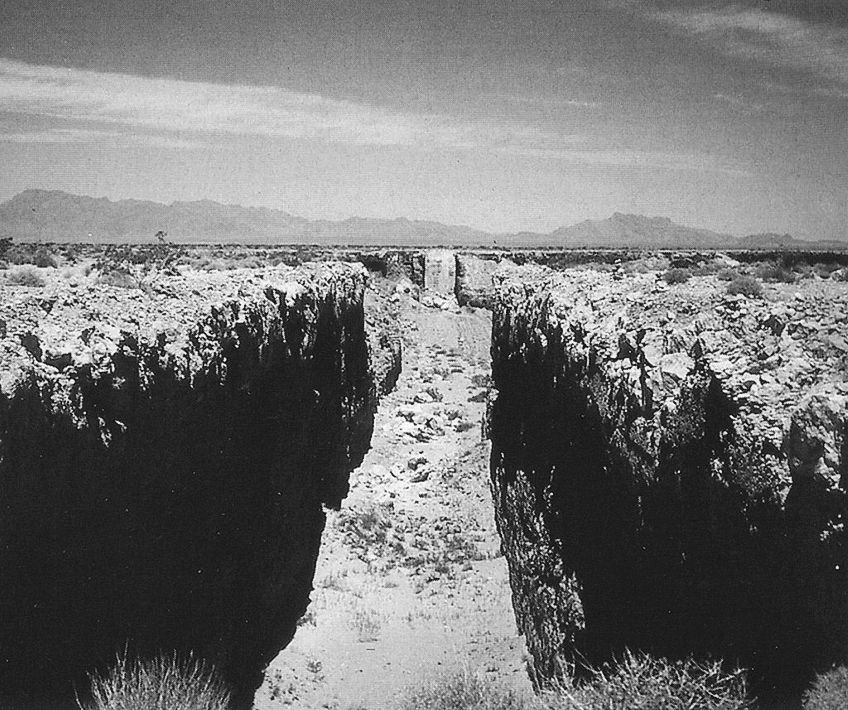
The City: Exploring New Territories
Following his time in the desert landscapes of Nevada, Heizer began to look for new territories. Heizer compiled various real estate files for properties in six states in the West. He purchased remote areas of land as his raw materials and canvases.
In 1970, Heizer began to conceptualize his greatest installation yet, one that remains under construction to this day, the City. This immense project combines Heizer’s ability to work with enormous variations in perspective, viewpoint, and scale with his interest in ancient civilizations.
Heizer found inspiration for this project in the pre-Colombian ritual cities of South and Central America and the mound-building traditions of Native American citizens in the Nevada desert.
Although he has not yet completed the City, Heizer continued to create new sculptures that explore the dynamics between negative space and positive forms. In 1976 he competed Adjacent, Against, Upon. This large sculpture explores the relationships between cast concrete forms and three enormous granite slabs. The granite slabs traveled to Myrtle Edwards Park by train and barge from their quarry site in the Cascade Mountain Range.
As he worked on the City, Heizer also developed several bodies of work. These works include negative wall sculptures where boulders and rocks are set into rectangular niches. Heizer also worked on developing screen-printed colors on shaped canvases. You can find these installations in various international galleries and public spaces.
Commissioned Works
Heizer also used granite in a sculpture commissioned for the home of Carol and Roy Doumani in Marina del Rey. Displaced/Replaced Mass (1969/1977) is an earthen sculpture with four differently sized granite boulders from the High Sierra. These boulders sit in submerged concrete boxes without lids so that the tops of the boulders sit level with the ground.
Heizer completed several commissions during this period, including a sculpture at the former New York IBM Building. This sculpture called Levitated Mass (1982) (a name he would re-use in the future) was the top of a large rock that Heizer sheered off and cut grooves into the surface. Heizer then set the boulder, which was designed as a fountain, onto supports within a stainless steel structure. In the completed sculpture, the boulder appears to float above the running water.
In the 1980s, the Ottawa Silica Company commissioned an earthwork by Heizer. This large artwork was called Effigy Tumuli. The earthwork lay on a site along the Illinois River that used to be a surface coal mine. Heizer turned the abandoned mine into a large earthwork consisting of five large abstract animal forms. The animal forms included a water strider, a snake, a frog, a turtle, and a catfish. Heizer chose these animal forms to reflect the natural environment of the site along the Illinois River.
Later Life
Since he began to work on The City, Heizer has shied away from massive media attention. Becoming a bit of a recluse, Heizer has continued to create (relatively) smaller scale artworks, including paintings and sculptures. Many of these works have featured in solo exhibitions, including shows at the Whitney Museum of American Art, the Museum of Contemporary Art, and the Gagosian Gallery. You can still see many of his works in galleries and public spaces across the world.
Heizer was diagnosed with polyneuropathy, a neurological disorder, in 1995. This disorder reduces one’s ability to use their hands, but Heizer did not give in to his illness. To this day, Heizer continues to work on “The City” and many other works.
Heizer completed a permanent installation called Levitated Mass (2012) at the Museum of Contemporary Art in Los Angeles. This installation shares a name with a previous piece, but it is not the same. The installation features an enormous white diorite boulder sitting above a long, 456 foot sloped path.
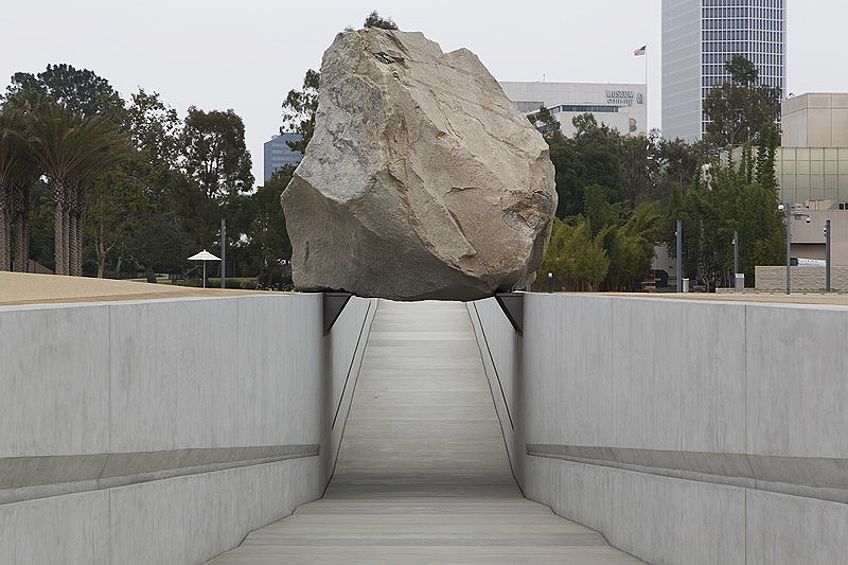
The boulder sits at a slight angle, and it rests between Sixth Street and Resnick Pavillion. As with all of Heizer’s works of art, the process of creating this work was not a simple one. The rock came from the Jurupa Valley, and the journey to the museum took eleven nights.
Filmmaker Doug Pray directed and edited a feature documentary about Levitated Mass which shared its name. The documentary explores Heizer’s career and documents the making of the sculpture and its journey to the exhibition site.
The Altar series was first presented in 2015 at the Gagosian Gallery in New York. This series of large steel sculptures allude to a variety of Heizer’s influences, including hieroglyphs, ancient rock carvings, and cattle-branding symbols. In this series, Heizer unifies architecture and images from multiple eras and cultures to create art that could outlast many human generations.
Michael Heizer Art: Major Works
In a sense, we can consider many of Heizer’s works as major works because of their size. Of the multitude of creative projects that Heizer undertook, several stand out because they break boundaries and invite a new conception of art. Here is a list of some of Heizer’s most well-known and influential pieces that we have mentioned briefly in this article.
| Date | Work Title | Location |
| 1967 | North, East, South, West | Sierra Nevada |
| 1968 | Nine Nevada Depressions | Dry Lakes throughout Nevada |
| 1969 | Double Negative | Mormon Mesa, Nevada |
| 1976 | Adjacent, Against, Upon | Myrtle Edwards Park |
| 1977 | Displace/Replaced Mass | Marina del Rey |
| 1980 | Effigy Tumuli | Illinois River |
| 1982 | Levitated Mass | IBM Building New York |
| 2012 | Levitated Mass | Museum of Contemporary Art LA |
| 2015 | Altar Series | Gagosian Gallery New York |
| 1970- | City | Garden Valley |
Compression Line (1968)
Embedded in the gardens of the Glenstone Museum lies Heizer’s Compression Line. The hollow steel chamber is 17 feet long, and it lies submerged in raspberry pink earth. The only part of the steel frame that is visible is an opening. The steel frame, pinched at the center, hints at the negative space within the chamber.
The allusion to hollow space shapes the land around the piece. As a sculpture and an earthwork, this piece is typical of Heizer’s experimentations with form and absence. Although this is not one of Heizer’s most famous or largest works, it is a thoughtful and intriguing exploration of the definition of art. What makes this work more artistic than a rabbit’s burrow? At what point do we begin to call a form art? Heizer does not offer any answers, he only encourages more questions.
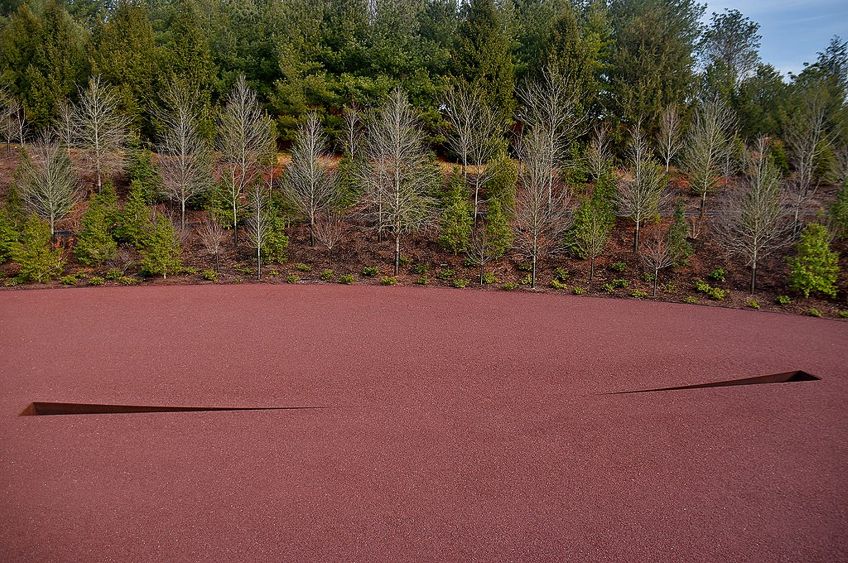
Double Negative (1969-1970)
The two deep trenches that Heizer blasted into the cliff faces of Nevada’s Moapa Valley represent a turning point in his career. Heizer created this piece during the conception of the Earth Art Movement. The two large trenches are 1,500 feet long and 50 feet deep, and they run perpendicular to the valley. This piece is the epitome of what Heizer calls negative sculpture because the form is only revealed with the removal of matter. Around 240,000 tons of sandstone and rhyolite rock had to be removed with heavy blasting equipment.
This artwork truly captures Heizer’s passion for creating art beyond the confines of studio walls. Not only is the piece a contemplation on negative space, but it also celebrates the positive forms of the landscape around the trenches. Even the vastest gallery or studio could not contain a work of this magnitude and complexity. It is only possible to consider the enormity of this work from the air.

Double Negative was one of the first pieces of earth art that used the earth as its medium and canvas. The piece is also typical of modern art in how it blurs the lines between worldly objects and spaces and what we consider art. The viewer is encouraged to consider what we define as art and why that definition does not extend further.
For Michael Heizer, Double Negative was not ecological art. However, it certainly draws attention to the natural beauty of the world around us. For Michael Heizer Double Negative is a directed exploration of the relationship between form and negative space and the aesthetic result of one displacing the other. These ideas extend from much of Heizer’s early paintings, which found influence in the Abstract Expressionists.
Originally, Heizer was unconcerned with the inevitable deterioration of this work. In recent years, however, he has considered using engineered concrete to rework the ramps.
Double Negative raises many questions for those who view it. What happens to art outside of the studio or gallery? How do you observe an artwork of such great scale? How does human art relate to the contours and forms created by millions of years of evolution and change?
City (1970-)
Although this work remains under construction, it is without a doubt Heizer’s most well-known project. Heizer began working on this mammoth project towards the end of his twenties. By this time, Heizer was already firmly at the forefront of the Earth Art Movement. For Michael Heizer, City is a culmination of all of his influences and artistic perspectives. He combines his fascination with ancient civilizations with his exploration of space and mass to create a work on a scale never seen before.
According to an interview with Heizer, his choice of materials was very strategic. Drawing on his knowledge of ancient South American cultures like the Aztecs, Olmecs, and Incans, Heizer insists that using seemingly worthless materials, like stone, concrete, and rocks, is protective.
The gold-encrusted artworks of these ancient cultures were pillaged and destroyed for their worth. Heizer believes that anyone who wishes to destroy the City will find that it takes much more effort than it is worth. Heizer wants his works, particularly the City, to outlast at least our generation, if not the whole of humanity.
It is ironic that this work, which Heizer hopes will outlast humanity, is flanked by a bomb-test site and an Air Force base. In recent years, the site has come under increasing threat with different companies vying for development rights. A railway to transport nuclear waste to a suggested container in Yucca Mountain has been suggested for the land around the City.
Fortunately, Senator Harry Reid is an advocate for public land and vehemently opposes the Yucca Mountain repository. Harry Reid fell in love with Heizer’s City and has pledged his support for the project, even convincing Barack Obama to declare the 704,000 acres of land around the City a national monument.
For Michael Heizer, City is reminiscent of the pyramids, temples, and courtyards of pre-Columbian cultures. The site consists of mastaba-like raised geometric concrete and steel forms and a sunken plaza. The contrast between form and absence draws attention to the meanings of negative and positive spaces.
Although Heizer takes great influence from the complexes of pre-Columbian cultures, the City is not a direct reference to any specific sites. Despite this, the influence is clear. Not only is the scale reminiscent of these ancient complexes, but the relationship between forms over a large expansion of dramatic desert landscape confirms that City is a meditation on the cultural history of the Americas.
The significance of the City cannot be understated. The work is one of the greatest pieces of art made in the last few centuries, both in size and cultural importance. The lengthy construction process, and Heizer’s reluctance to let anyone judge it before completion, have lent the site a mythical status.
This complex is known internationally, and we all hope that it will be finished so that future generations may marvel at the labor and dedication that Heizer poured into this earthwork.
Levitated Mass (2012)
This piece is the second work by Heizer to adopt this name, and it is the most well-known of the two. The piece is installed in the sculpture garden in the Museum of Art in Los Angeles. Above a 456 foot, sunken pathway sits a 340-ton granite boulder. The boulder measures around 21.5 by 21.5 feet and makes for a daunting walk beneath it. Situating large boulders in precarious positions is a common theme in Heizer’s work, and this is one of the most impressive examples.
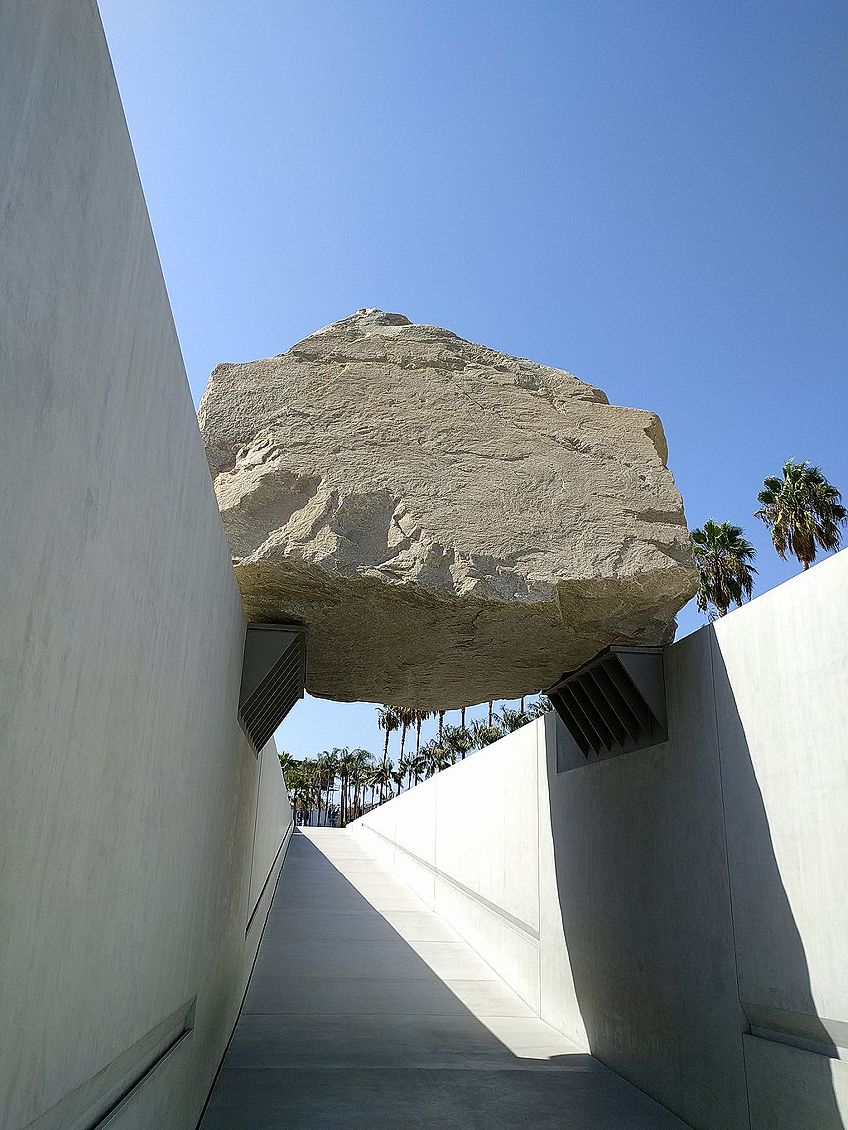
The granite boulder came from the Stone Valley Materials quarry in California, and it took 11 nights to arrive at its final resting place in Los Angeles. The 105-mile journey took the boulder through four counties, 22 cities, and the densely populated neighborhoods of Los Angeles. The journey was followed closely by many, including a documentary team who introduced much of the world to Michael Heizer. The placement of the boulder above a walkway of 456 feet allows for 360-degree viewing.
Michael Heizer remains an influential figure in the world of Earth Art. Since the 1960s, Heizer has challenged the world to view art and the earth differently. Michael Heizer earthworks encourage us all to leave the confines of galleries and studios, to appreciate the wonders of the natural world and its plentiful materials.
Isabella studied at the University of Cape Town in South Africa and graduated with a Bachelor of Arts majoring in English Literature & Language and Psychology. Throughout her undergraduate years, she took Art History as an additional subject and absolutely loved it. Building on from her art history knowledge that began in high school, art has always been a particular area of fascination for her. From learning about artworks previously unknown to her, or sharpening her existing understanding of specific works, the ability to continue learning within this interesting sphere excites her greatly.
Her focal points of interest in art history encompass profiling specific artists and art movements, as it is these areas where she is able to really dig deep into the rich narrative of the art world. Additionally, she particularly enjoys exploring the different artistic styles of the 20th century, as well as the important impact that female artists have had on the development of art history.
Learn more about Isabella Meyer and the Art in Context Team.
Cite this Article
Isabella, Meyer, “Michael Heizer – A Look at Land Artist Michael Heizer’s Earthworks.” Art in Context. April 8, 2021. URL: https://artincontext.org/michael-heizer/
Meyer, I. (2021, 8 April). Michael Heizer – A Look at Land Artist Michael Heizer’s Earthworks. Art in Context. https://artincontext.org/michael-heizer/
Meyer, Isabella. “Michael Heizer – A Look at Land Artist Michael Heizer’s Earthworks.” Art in Context, April 8, 2021. https://artincontext.org/michael-heizer/.






